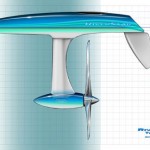This article is a contributed piece by the authors of Sustainable Suburbia
The rising cost of fossil fuels is inevitably leading to a greater interest in renewable energy sources the world over. While there are many ways energy can be produced, only a few are practical and economically viable for home use. Heading the list is, of course, solar power. But the use of wind power and geothermal power are also on the rise, although their viability for widespread use is somewhat limited because of their cost and also because they are not universally available. Tidal power is another real alternative to solar, but not for home use, as we shall see .
 The use of wind power is almost as old as human civilization. People around the world have been using it to turn windmills and to draw out ground water for irrigation for as long as anyone can remember. But for the last one hundred or so years it is increasingly being used to generate electricity. Wind power is clean source of free energy. But it has its drawbacks. Modern wind turbines require at least 33 km/hr of wind speed, which is simply not consistently available in most places. Also, the installation cost is out of range of most homeowners.
The use of wind power is almost as old as human civilization. People around the world have been using it to turn windmills and to draw out ground water for irrigation for as long as anyone can remember. But for the last one hundred or so years it is increasingly being used to generate electricity. Wind power is clean source of free energy. But it has its drawbacks. Modern wind turbines require at least 33 km/hr of wind speed, which is simply not consistently available in most places. Also, the installation cost is out of range of most homeowners.
Geothermal energy is the thermal energy that comes out of the earth’s molten core, and is more readily and abundantly available in areas where the earth’s tectonic plates collide into each other. Although it has been used for thousands of years as a source of heat, its use as a large-scale source of heat and electricity, however, is quite recent. According to Wikipedia, there is now a total installed capacity of 10,715 MW of electricity. In addition to that, there is 29 GW of heat energy generated through ground-source heat pumps. But because geothermal energy is not available everywhere and it is costly to convert it into electricity, it’s viability for home use is limited at present.
 Tidal power is a form of hydropower because it uses the force of tidal movement in the oceans to generate energy. According to some estimates, tidal power has the potential to fulfill the energy requirement of the entire world. Its use is not new either – tidal mills were in use in Europe from the 7th century until the 20th century. Tidal power is reliable, constant and environment-friendly. But it has two big drawbacks: the cost of production, which is exorbitantly high, and the difficulty of finding a place with sufficiently high tidal velocity to turn the turbines.
Tidal power is a form of hydropower because it uses the force of tidal movement in the oceans to generate energy. According to some estimates, tidal power has the potential to fulfill the energy requirement of the entire world. Its use is not new either – tidal mills were in use in Europe from the 7th century until the 20th century. Tidal power is reliable, constant and environment-friendly. But it has two big drawbacks: the cost of production, which is exorbitantly high, and the difficulty of finding a place with sufficiently high tidal velocity to turn the turbines.
For those interested in renewable energy, David Findley’s ‘Solar Power for Your Home‘ (also available on Kindle) is a highly recommended book. Although the book is primarily about solar energy, as the title makes plain, it also covers other sources of energy such as wind power, geothermal power and tidal power.
Related pages: